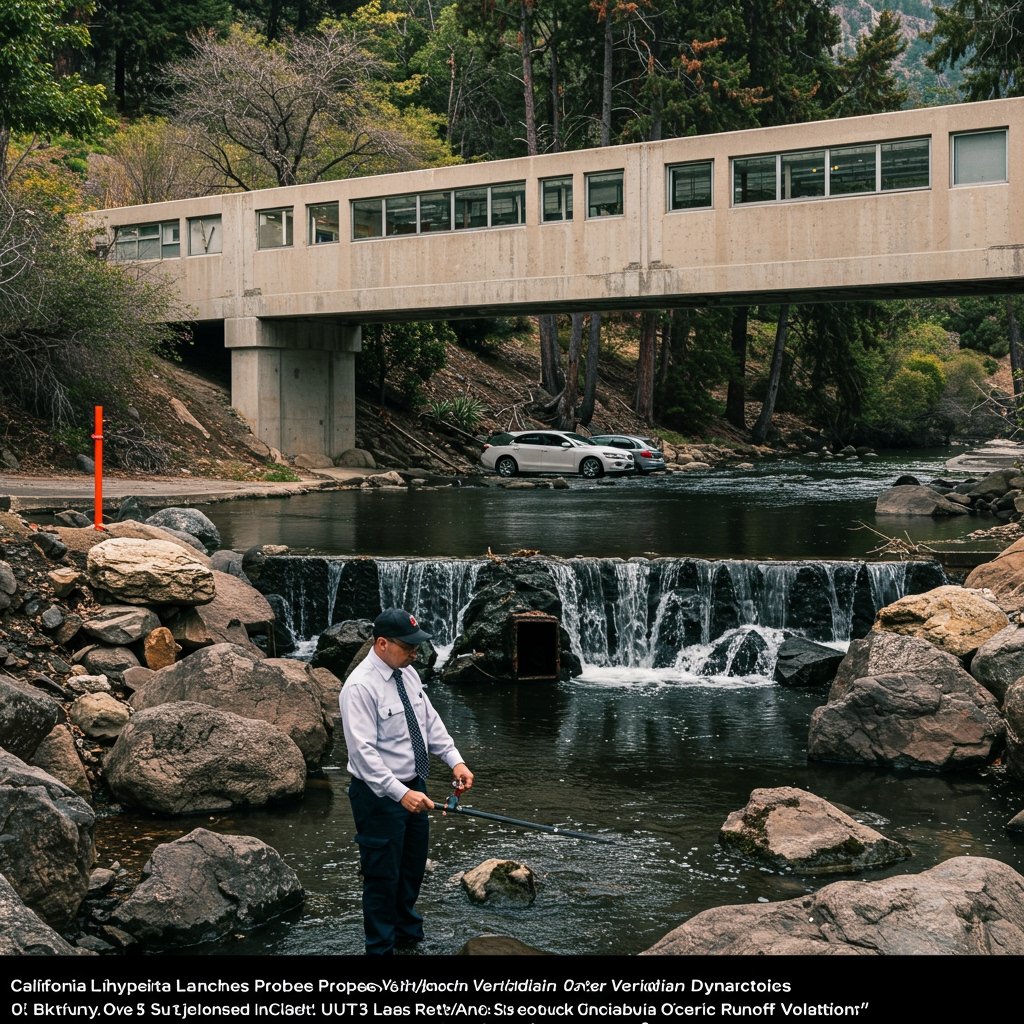State Regulators Target Veridian Dynamics in Environmental Investigation
SACRAMENTO, CA – The California Environmental Protection Agency (CalEPA) announced today it has launched a formal investigation into Veridian Dynamics, a significant manufacturing firm with operations situated near the ecologically sensitive San Francisco Bay Area. The extensive probe was initiated following the emergence of new data that strongly suggests the company’s facility, located in Solano County, may be discharging elevated levels of restricted chemicals into local waterways. Such discharges could potentially constitute violations of established state and federal environmental laws, including critical provisions outlined in California Assembly Bill 789, a landmark piece of legislation that officially took effect in early 2025.
This regulatory action by CalEPA underscores a heightened focus on industrial compliance and water quality protection across the state. The decision to initiate the formal investigation stems from concerns originally raised by local environmental groups and further substantiated by independent testing conducted in late 2024. These tests reportedly revealed concerning concentrations of certain chemicals in effluent samples collected downstream from the Veridian Dynamics Solano County site, prompting state authorities to take a closer look at the company’s operational practices and environmental footprint.
Scope and Duration of the Investigation
The CalEPA investigation is designed to be thorough and comprehensive, employing a multi-faceted approach to gather evidence and assess the situation. Over the next three months, agency investigators will undertake several key activities. A primary focus will be the rigorous examination of Veridian Dynamics’ internal effluent monitoring reports, mandated records that detail the composition and volume of wastewater discharged from the facility. Regulators will compare these reports against permit requirements and the new independent testing data to identify discrepancies or patterns indicative of non-compliance.
In parallel with the document review, investigators will also be conducting detailed site assessments at the Veridian Dynamics facility in Solano County. These assessments typically involve on-site inspections, sampling of soil and water (both within and outside the facility’s boundaries), evaluation of wastewater treatment systems, and potentially interviews with company personnel. The goal is to directly verify conditions on the ground and determine the extent and nature of any alleged chemical releases. The three-month timeframe represents the initial phase of the investigation, during which critical data will be collected and analyzed to inform subsequent steps.
Background on Veridian Dynamics and Solano County Operations
Veridian Dynamics is known as a major manufacturing firm with a considerable presence in the California economy, employing a significant workforce. The Solano County facility in question is strategically located within proximity to the San Francisco Bay Area, a region renowned for its ecological biodiversity, extensive waterways, and large population centers. While manufacturing operations contribute significantly to local and regional economies, they are also subject to stringent environmental regulations designed to prevent pollution and protect natural resources and public health. The investigation puts a spotlight on the environmental practices of large industrial operators in sensitive areas.
Legal Context: State, Federal Laws, and AB 789
The core of CalEPA’s investigation revolves around potential violations of environmental regulations. This includes both long-standing federal statutes, such as the Clean Water Act, and California’s own robust set of environmental protection laws. A significant piece of legislation relevant to this investigation is California Assembly Bill 789. This bill, which became effective in early 2025, introduced new or strengthened existing requirements concerning industrial wastewater discharge, monitoring, and reporting, particularly for facilities located near critical water bodies. The investigation will specifically assess whether Veridian Dynamics’ alleged discharges violate these current legal standards, including those newly implemented under AB 789. The potential legal consequences for non-compliance can include significant fines, mandated cleanup efforts, and other enforcement actions.
Environmental and Public Health Implications
Discharging “elevated levels of restricted chemicals” into local waterways poses considerable environmental and potential public health risks. Restricted chemicals are often designated as such due to their known toxicity to aquatic life, persistence in the environment, or potential to accumulate in the food chain. Waterways in Solano County are part of the larger hydrologic system feeding into the San Francisco Bay, a vital estuary supporting diverse ecosystems, fisheries, and recreational activities. Pollution from industrial sources can harm fish and wildlife populations, degrade habitat quality, and potentially impact drinking water sources or contaminate seafood, though the specific impacts in this case are subject to the ongoing investigation.
Community Concerns and Independent Testing
The regulatory action follows persistent concerns voiced by local environmental groups active in the Solano County and San Francisco Bay Area regions. These groups have often monitored water quality in the area and advocated for stricter enforcement of environmental laws. It was their vigilance and the independent testing they facilitated in late 2024 that played a crucial role in bringing the potential issue at the Veridian Dynamics facility to the attention of state regulators. The findings from this independent testing served as a key catalyst for CalEPA’s decision to launch a formal probe, highlighting the important role of citizen oversight and independent data collection in environmental protection.
What Happens Next
Over the mandated three-month period, CalEPA will meticulously gather and analyze all relevant data, including the company’s records and their own site assessment findings. Upon completion of this initial phase, the agency will review the evidence to determine if violations have occurred. Potential outcomes range from finding no evidence of wrongdoing to identifying violations that could lead to formal enforcement actions. These actions might include issuing notices of violation, negotiating consent decrees for corrective actions and penalties, or pursuing legal action. Veridian Dynamics is expected to cooperate fully with the state’s investigation.
The outcome of this investigation will be closely watched by environmental advocates, other manufacturing firms in the state, and the public, as it could set precedents for enforcing recently implemented environmental laws like AB 789 and underscore the state’s commitment to protecting its precious water resources from industrial pollution.


















